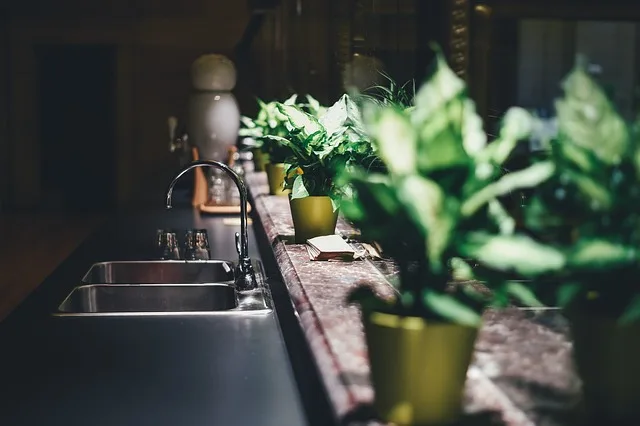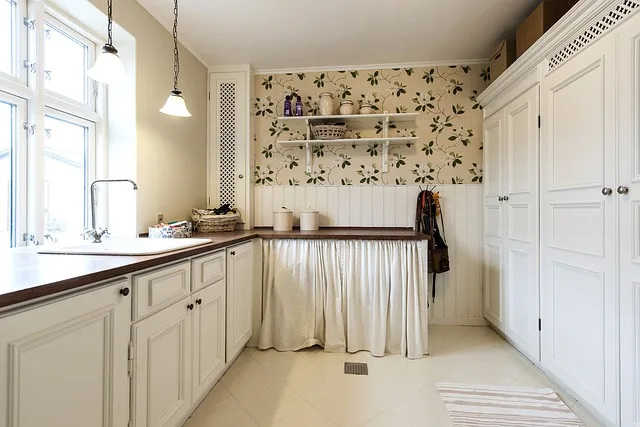First things first, gather your tools. You’ll need a screwdriver, a drill, a level, and maybe even a friend to lend a hand. Trust me, having an extra set of hands can make a world of difference. Now, before you dive in, it’s crucial to empty those cabinets. Picture this: you’re trying to lift a heavy box while juggling a dozen eggs. Not fun, right? So, clear out all the dishes, pots, and pans to make your job easier.
Next, locate the screws that hold the cabinets to the wall. These are usually found on the underside of the cabinet or on the sides. If you can’t find them, don’t hesitate to peek behind the cabinet. It’s like a treasure hunt, but instead of gold, you’re after screws! Once you’ve found them, start unscrewing. If the cabinet is stubborn, a little gentle wiggling can help loosen it up.
Now, here’s where teamwork comes into play. While one person holds the cabinet steady, the other can finish unscrewing. It’s like a dance—one person leads, and the other follows. Once the screws are out, carefully pull the cabinet away from the wall. If it feels stuck, check for any hidden screws or nails.
And just like that, you’ve successfully taken down your kitchen cabinets! It’s a bit of work, but with patience and a little elbow grease, you’ll be on your way to a fresh new kitchen look.
DIY Kitchen Makeover: A Step-by-Step Guide to Safely Remove Your Cabinets
First things first, gather your tools. You’ll need a screwdriver, a pry bar, and maybe a hammer. Think of these tools as your trusty sidekicks on this renovation journey. Now, before you start yanking those cabinets off the wall, it’s crucial to empty them out. Imagine trying to lift a suitcase packed to the brim—it’s just not going to work smoothly! So, clear out all the dishes, pots, and pans.
Next, turn off the power to any electrical outlets in the cabinets. Safety first, right? You wouldn’t want to accidentally zap yourself while trying to channel your inner handyman. Once that’s done, it’s time to unscrew the cabinets from the wall. Start with the upper cabinets, as they’re usually lighter and easier to manage. Use your screwdriver to remove the screws, and if they’re stubborn, a little persuasion with the pry bar can help.
As you take them down, be mindful of any plumbing or electrical connections. If you encounter any, it’s best to call in a pro rather than risk a DIY disaster. Once the upper cabinets are off, move on to the lower ones. These can be heavier, so consider having a friend lend a hand. It’s like moving a couch—two sets of hands make it a whole lot easier!
With the cabinets gone, you’re one step closer to that dream kitchen. Just remember, patience is key. Enjoy the process, and soon enough, you’ll be ready to install your fabulous new cabinets!
Unlocking Your Kitchen’s Potential: Expert Tips for Taking Down Cabinets Like a Pro
First things first, gather your tools. You’ll need a screwdriver, a drill, a pry bar, and safety goggles. Think of these tools as your trusty sidekicks on this adventure. Before you start, clear out the cabinets. It’s like decluttering your mind before a big exam—essential for a smooth process!
Next, it’s all about the prep work. Turn off the power to any lights or outlets in the cabinets. You wouldn’t want to accidentally zap yourself while you’re in the zone! Once that’s done, it’s time to remove the doors. Unscrew them and set them aside. It’s like peeling an onion—layer by layer, you’re getting closer to the core of your kitchen’s potential.
Now, let’s talk about the actual cabinet removal. Start with the upper cabinets. Use your drill to remove the screws holding them to the wall. If they’re stubborn, a pry bar can help. Just be gentle; you don’t want to damage your walls. Think of it as coaxing a shy friend out of their shell—patience is key!
As you work, keep an eye out for any hidden surprises, like old wiring or plumbing. It’s like a treasure hunt! Once the cabinets are down, take a moment to admire your handiwork. You’ve just opened up a world of possibilities for your kitchen. Whether you’re planning to paint, install new shelves, or simply enjoy the newfound space, you’re well on your way to creating a kitchen that’s uniquely yours.
From Drab to Fab: How to Remove Kitchen Cabinets Without the Hassle
First things first, gather your tools. You’ll need a screwdriver, a pry bar, and maybe a friend or two to help. Think of it like preparing for a mini-adventure—having the right gear makes all the difference! Start by emptying your cabinets. It’s like decluttering your mind; once you clear out the old stuff, you can see the potential for something new.
Next, locate the screws that hold your cabinets in place. They’re usually found on the inside edges. Unscrew them gently, and if you encounter any stubborn ones, a little elbow grease will do the trick. It’s like trying to open a jar of pickles—sometimes you just need to twist a bit harder!
Once the screws are out, it’s time to detach the cabinets from the wall. This is where your pry bar comes in handy. Slide it between the cabinet and the wall, and with a little wiggle, you’ll feel it loosen up. It’s almost like peeling a banana—just be careful not to make a mess!
The Ultimate Guide to Cabinet Removal: Transform Your Kitchen in Just a Weekend

First things first, let’s talk about preparation. Before you dive in, gather your tools—think screwdrivers, a pry bar, and maybe even a hammer. It’s like assembling your own superhero team, ready to tackle the mission ahead. And don’t forget to empty those cabinets! It’s time to say goodbye to the clutter and make room for your new vision.
Now, onto the fun part: the actual removal. Start by unscrewing the cabinet doors. It’s like peeling an orange; once you get past the outer layer, the juicy goodness is waiting inside. With the doors off, you can easily access the cabinet boxes. Use your pry bar to gently detach them from the wall. Just be careful—nobody wants a surprise shower of dust and debris!
As you work, keep an eye out for any hidden treasures. You might find old receipts or forgotten spices that could spark a laugh or two. And remember, this isn’t just about removing cabinets; it’s about creating a blank canvas for your dream kitchen. Picture the possibilities: new paint, stylish hardware, or even open shelving to showcase your favorite dishes.
Once the cabinets are down, take a moment to admire your handiwork. You’ve just opened up your kitchen to a world of potential. With a little creativity and some DIY spirit, you’re well on your way to a stunning transformation that will impress family and friends alike. So, roll up those sleeves and get ready to unleash your inner designer!
Ready for a Renovation? Here’s How to Take Down Your Kitchen Cabinets with Ease

First things first, gather your tools. You’ll need a screwdriver, a drill, a pry bar, and maybe even a friend to lend a hand. Think of it like assembling your own superhero team—each tool plays a vital role in your mission. Before you start, clear out everything from your cabinets. It’s like decluttering your mind before a big exam; you want to be focused and ready.
Next, locate the screws that hold your cabinets in place. They’re usually found on the underside of the cabinet or inside the doors. Unscrew them carefully, and if you encounter stubborn screws, don’t hesitate to use a little elbow grease. It’s like trying to open a jar of pickles—sometimes you just need to twist a bit harder!
Once the screws are out, gently pull the cabinet away from the wall. If it feels stuck, don’t force it; instead, use your pry bar to help loosen it. Think of it as coaxing a shy cat out from under the bed—patience is key!
As you remove each cabinet, keep an eye out for any hidden wires or plumbing. You wouldn’t want to accidentally pull out something important, right? And remember, safety first! Wear gloves and goggles to protect yourself from any flying debris.
With a little preparation and the right mindset, you’ll be well on your way to a stunning kitchen transformation. So, roll up those sleeves and get ready to create the kitchen of your dreams!
Frequently Asked Questions
Do I Need Help to Take Down Kitchen Cabinets?
Removing kitchen cabinets can be a challenging task that often requires assistance. If you lack experience with tools or heavy lifting, it’s advisable to seek help to ensure safety and prevent damage to your kitchen. Proper planning and support can make the process smoother and more efficient.
How Can I Avoid Damage When Removing Cabinets?
To prevent damage when removing cabinets, start by emptying all contents and detaching any hardware. Use a pry bar gently to loosen the cabinet from the wall, taking care not to damage surrounding surfaces. If cabinets are mounted, ensure to remove screws or nails carefully. Consider using a helper for stability and to avoid dropping or scratching the cabinets or walls.
What Are the Steps to Remove Lower Kitchen Cabinets?
To remove lower kitchen cabinets, first, empty the cabinets and remove any doors and hardware. Next, disconnect plumbing and electrical connections if applicable. Use a pry bar to gently detach the cabinets from the wall, starting from the top. Remove screws or nails securing the cabinets to the wall and to each other. Finally, lift the cabinets away from the wall and dispose of or store them as needed.
How Do I Safely Take Down Upper Cabinets?
To safely remove upper cabinets, start by emptying all contents and removing any hardware. Use a stud finder to locate and mark the wall studs. Support the cabinet with a helper or a sturdy brace, then unscrew it from the wall. Carefully lift the cabinet off the mounting brackets, ensuring it is stable throughout the process. Always wear safety gear and take precautions to avoid injury.
What Tools Do I Need to Remove Kitchen Cabinets?
To remove kitchen cabinets, you will need a few essential tools: a screwdriver (both flathead and Phillips), a drill, a pry bar, a level, a stud finder, and safety goggles. Additionally, having a utility knife and a measuring tape can help ensure a smooth removal process. Make sure to turn off any power to appliances and disconnect plumbing if necessary before starting.